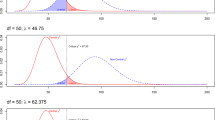Abstract
Nondeterministic models of collective choice posit convergence among the outcomes of simple-majority decisions. The object of this research is to estimate the extent of convergence of majority choice under different procedural conditions. The paper reports results from a computer simulation of simple-majority decision making by committees. Simulation experiments generate distributions of majority-adopted proposals in two-dimensional space. These represent nondeterministic outcomes of majority choice by committees. The proposal distributions provide data for a quantitative evaluation of committee-choice procedures in respect to outcome convergence. Experiments were run under general conditions, and under conditions that restrict committee choice to several game-theoretic solution sets. The findings are that, compared to distributions of voter ideal points, majority-adopted proposals confined to the solution sets demonstrate different degrees of convergence. Second, endogenous agenda formation is a more important obstacle to convergence than the inherent instability of simple-majority rule. Third, if members maximize preferences in respect to agenda formation, a committee choice that approximates the central tendency of the distribution of voter preferences is unlikely. The conclusion is that the most effective way to increase the convergence of majority choice is to restrict the role of individual preferences in agenda formation: identification of proposals to be voted up or down by a committee.
Similar content being viewed by others
REFERENCES
Bartholdi, J.J., Narasimhan, L.S. and Tovey, C.A. (1991), Recognizing majority rule equilibriumin spatial voting games. Social Choice and Welfare 7: 183-197.
Davis, O.A., DeGroot, M. H. and Hinich, M. J. (1972), Social preference orderings and majority rule. Econometrica 40: 147-157.
Feld, S. L., Grofman, B. and Miller, N. R. (1988), Centripetal forces in spatial voting: on the size of the yolk. Public Choice 59: 37-50.
Feld, S.L., Grofman, B. and Miller, N.R. (1989), Limits on agenda control in spatial voting games. Mathematical Modeling 12: 405-416.
Ferejohn, J.A., Fiorina, M. P. and Packel, E.W. (1980), Nonequilibrium solutions for legislative systems. Behavioral Science 25: 140-148.
Ferejohn, J.A., McKelvey, R.D. and Packel, E.W. (1984), Limiting distributions for continuous state markov voting models. Social Choice and Welfare 1: 45-67.
Koehler, D.H. (1990), The size of the yolk: Computations for odd and even numbered committees. Social Choice and Welfare 7: 231-245.
Koehler, D.H. (1992), Limiting median lines frequently determine the yolk: A rejoinder. Social Choice and Welfare 9: 37-41.
Koehler, D.H. (1996), Committee choice and the core under supramajority rule: Results from simulation of majority choice in 2-dimensional space. Public Choice 87: 281-301.
McKelvey, R.D. (1976), Intransitivities in multidimensional voting models and some implications for agenda control. Journal of Economic Theory 12: 472-482.
McKelvey, R.D. (1986), Covering, dominance, and institution free properties of social choice. American Journal of Political Science 30: 283-314.
Miller, N.R. (1980), A new solution set for tournaments and majority voting. American Journal of Political Science 24: 68-96.
Packel, E.W. (1981), A stochastic solution concept for n-person games. The Mathematics of Operations Research 6: 349-362.
Shepsle, K.A. and Weingast B.R. (1984), Uncovered sets and sophisticated voting outcomes with implications for agenda institutions. American Journal of Political Science 28: 49-74.
Stone, R.E. and Tovey, C.A. (1992), Limiting median lines do not suffice to determine the yolk. Social Choice and Welfare 9: 33-35.
Tovey, C.A. (1991), A polynomial-time algorithm for computing the yolk in fixed dimension. Mathematical Programming 57: 259-277.
Weisberg, H.F. (1992), Central tendency and variability. Newbury Park, CA: Sage.
Wilson, R.K. (1986), Forward and backward agenda procedures: Committee experiments on structurally induced equilibrium. Journal of Politics 48: 390-409.
Author information
Authors and Affiliations
Rights and permissions
About this article
Cite this article
Koehler, D.H. Instability and Convergence Under Simple-Majority Rule: Results from Simulation of Committee Choice in Two-Dimensional Space. Theory and Decision 50, 305–332 (2001). https://doi.org/10.1023/A:1010392320211
Issue Date:
DOI: https://doi.org/10.1023/A:1010392320211




